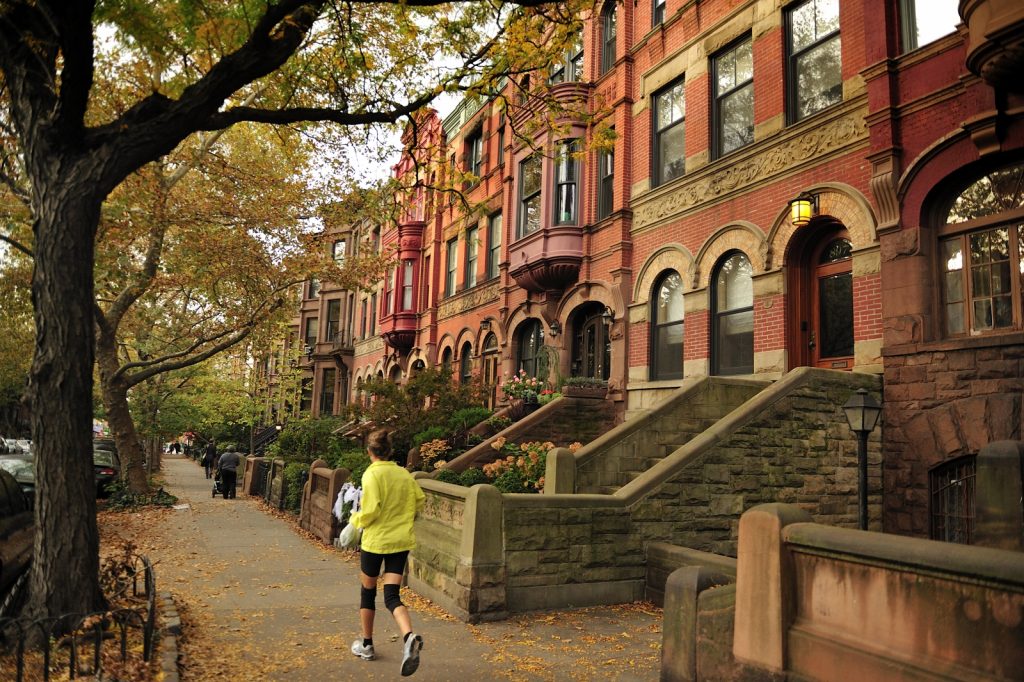
If you’re looking to buy as an investment, be sure to look for details that set a property apart.
Editor’s note: This is a guest post by John Katz, vice president of Sherwood Equities, a Manhattan-centric developer with properties in Long Island and Brooklyn.
When searching for a brownstone as an investment, the first thing you’ll want to do is identify exactly what kind of investment you’re looking to make. There are generally three types of brownstone investors: pure investors, end users, and investors who live in one unit and rent the remainder of the home. The last group has become increasingly popular, as buyers seek to maximize their investment in favor of more compact and efficient living. The money collected from rent can then be used to offset real estate taxes and other utility bills.
Location
When I’m looking for a brownstone to invest in, location is by far the most important criteria. Since I’m not an end user, I like multi-families on park blocks and have had luck finding prime properties in Fort Greene, all at most a block away from Fort Greene Park. I also own one on a park block in Park Slope. Because I strongly believe in Brooklyn’s future growth, I prefer holding onto these properties as rentals rather than attempting to resell or flip them. If your budget starts at $2.5 million, you’ll be able to find a home in Park Slope relatively near Prospect Park. If your budget is smaller, you might find yourself moving toward Gowanus.
The same budget applies for Fort Greene and proximity to Fort Greene Park; if you’re working with less than $2 million, you’ll find yourself on the periphery of the neighborhood moving into Clinton Hill. This can be a very good thing; some great deals are made here. If your budget is between $1 million and $2.5 million, and you’re looking to stretch your dollar further, you should consider Bedford-Stuyvesant or Crown Heights. Both are seeing a massive wave of investment right now, and have the same tree-lined streets, beautiful architecture and neighborhood charm that make Park Slope, Fort Greene, Carroll Gardens and Brooklyn Heights unique.
If you don’t have a spare $5 million for a home on or near a park block, look for well-maintained, tree-lined streets as close to a park as possible. In Park Slope, if you’re willing to walk the extra seven minutes (not a heavy lift!) from Fifth Avenue to the park, you could save a few million dollars. This seems like a good deal to me.
What to Look for
When identifying a great brownstone investment, look for aspects that set the property apart from the rest of the housing stock on the market. Large windows, grand ceiling heights, width, and the presence of a garage are all important factors. Given the similarity between brownstones, these are the aspects that add intrinsic value to a home.
Condition
When you’re looking to purchase a brownstone as an investment, be mindful of the condition of the home, both inside and out.
From the outside, you’ll want to look for any obvious cracking or evidence that weathering hasn’t undermined the integrity of the façade. Take a look under the stoop. Are the steps rotting from underneath? Look up toward the cornice. Is there any evidence of disrepair? These are all questions that can be answered by a professional.
While in contract, you should, without question, perform a building inspection. This is a head-to-toe exam of the property, performed by a licensed professional. He or she will inform you on the structural integrity of the property, when you might need a new boiler, when you’ll need a roof replacement, and other important cost considerations you otherwise wouldn’t know. This will give you a complete picture of the home and what work you may have to do to bring it back into livable condition.
Original Details
A lot of people stress the importance of preserving all original architectural details, regardless of cost. That’s up to you. Sometimes it’s easier to start from scratch and do a gut renovation. The people who go this route typically like a more modern design.
Sometimes you can marry a modern concept with elements of the original details. It’s a good idea to have an architect with you as you go on your search, so you have a sounding board for ideas and a source for advice.
If renovating isn’t for you, there are plenty of homes in livable condition on the market. You’ll find that a lot (not all) of Brooklyn’s townhouse stock has been well cared-for by owners who’ve found joy in preserving a bit of New York City history.
If you’re looking for a great brownstone investment today, here are some current StreetEasy listings to check out:
Over $6 million
104 Prospect Park West (Park Slope): Nothing can beat living on the park.
$3-6 million
247 Hancock St. (Bed-Stuy) — Usually I wouldn’t go for a single family home, but this is just a beauty. Nothing compares to its wraparound backyard and sharp, buttoned-up architecture.
524 3rd St. (Park Slope)— Looks good as a single family and perhaps convertible to multifamily with minimal work. Proximity to the park is a big plus.
178 Eighth Ave. (Park Slope)— Beautifully renovated, so no work needed. Preserved moldings and woodwork on staircase give a distinguished character.
$1-3 million
294 Gates Ave. (Bed-Stuy) — Two-family, beautiful new renovation. Can live in the upper unit and rent the lower, or vice versa.
629 Putnam Ave. (Bed-Stuy) — Legal four-family with beautiful bones.
731 Putnam Ave. (Bed-Stuy) — Legal three-family being used as a two-family. Efficient layouts with a bathroom for each bedroom.
—
Hey, why not like StreetEasy on Facebook and follow @streeteasy on Instagram?
Related: